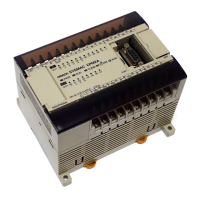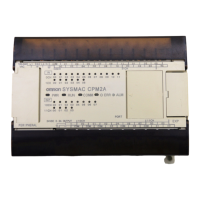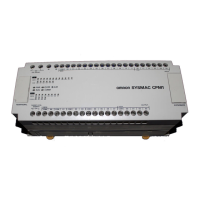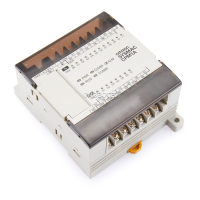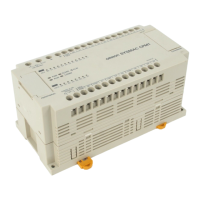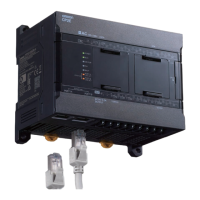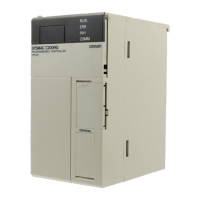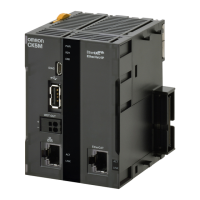164
Programming Console Operations Section 4-2
2. Press the SHIFT and then the 1 Key to turn off the buzzer.
3. Press the SHIFT and then the 1 Key again to turn the buzzer back ON.
4-2-7 Assigning Expansion Instruction Function Codes
This operation is used to display or change the expansion instructions
assigned to expansion instruction function codes. The assignments can be
displayed in any mode, but can be changed in PROGRAM mode only.
Assign expansion instruction function codes before inputting the program. The
CPM2C will not operate properly if expansion instructions aren’t assigned cor-
rectly. An expansion instruction can be assigned to one function code only.
The PC Setup must be set for user-defined expansion instruction assign-
ments. Set bits 8 to 11 of DM 6602 to 1 and turn the PC’s power off and then
on again to enable the new setting.
There is a table on page 290 showing the default function code assignments
in the CPM2C.
1,2,3... 1. Press the CLR Key to bring up the initial display.
2. Press the EXT Key to display the assignment for the first function code
(17).
3. Press the Up and Down Arrow Keys to scroll through the expansion in-
struction function codes.
4. Press the CHG Key to assign a different expansion instruction to the se-
lected function code.
5. Press the Up and Down Arrow Keys to scroll through the expansion in-
structions that can be assigned to the selected function code.
6. Press the WRITE Key to assign the displayed instruction to the function
code.
CLR SHIFT CLR
<MONITOR> BZ
SHIFT
B
1
<MONITOR>
The buzzer will not sound
when "BZ" is not displayed.
SHIFT
B
1
<MONITOR> BZ
Operation RUN MONITOR PROGRAM
Read assignment OK OK OK
Change assignment No No OK
EXT
INST TBL READ
FUN017:ASFT
E
INST TBL READ
FUN018:FUN
CHG
INST TBL CHG?
FUN018:FUN ~????
E
INST TBL CHG?
FUN018:FUN ~HEX
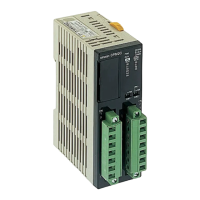
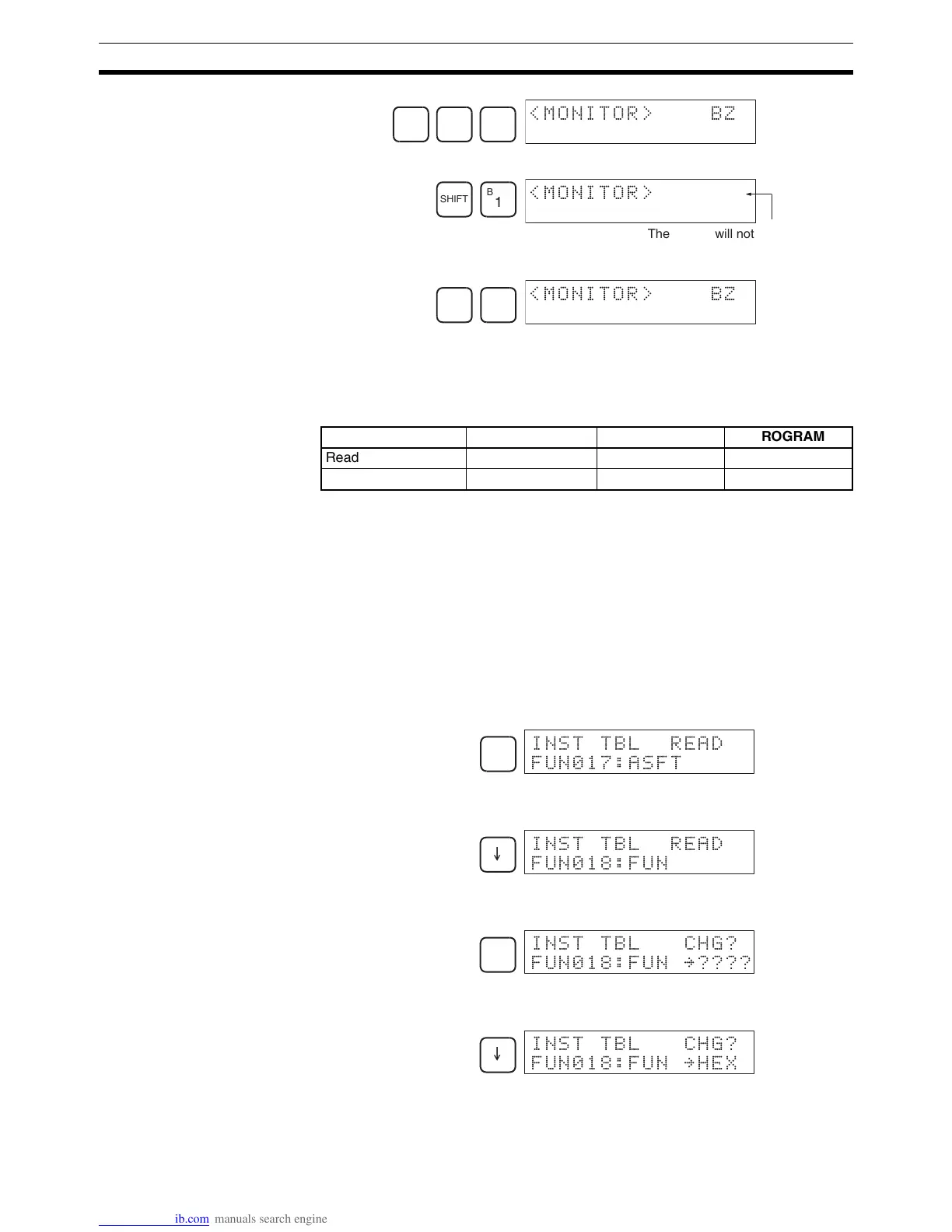